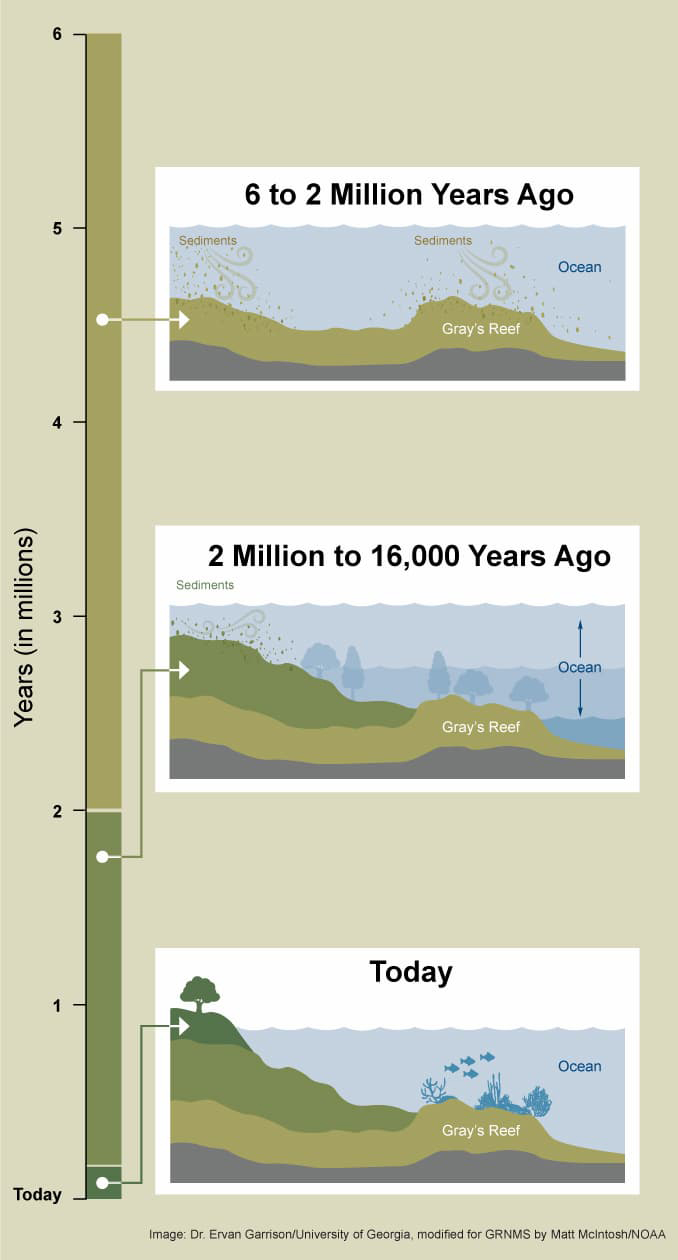Geologic History
The Gray's Reef we know today has only been underwater for the last 16,000 years, a short time compared to the South Atlantic's history. Due to glacial periods, the site of Gray's Reef is known to have been dryland at least seven times. Changes in sea level over millions of years caused layers of sediments to collect while underwater, and compact when exposed to air, building the sandstone strata below Gray's Reef.

6 to 2 Million Years Ago
The hard bottom of Gray's Reef was created by the consolidation of ocean and terrestrial sediments (sand, shell, and mud) that were laid down as loose aggregate between six million and two million years ago.
2 Million to 16,000 Years Ago
Between two million and 16,000 years ago, sea levels rose and fell at least seven times, periodically exposing Gray's Reef as land.
Today
As the glacial ice melted for the last time starting 18,000 years ago, water flowed back into the sea, filling the ocean basins and covering Gray's Reef.
Prehistoric artifacts of Gray's Reef
Artifacts that have been found at or near Gray's Reef include a Wooly mammoth tusk and arrowheads of prehistoric Native Americans.

